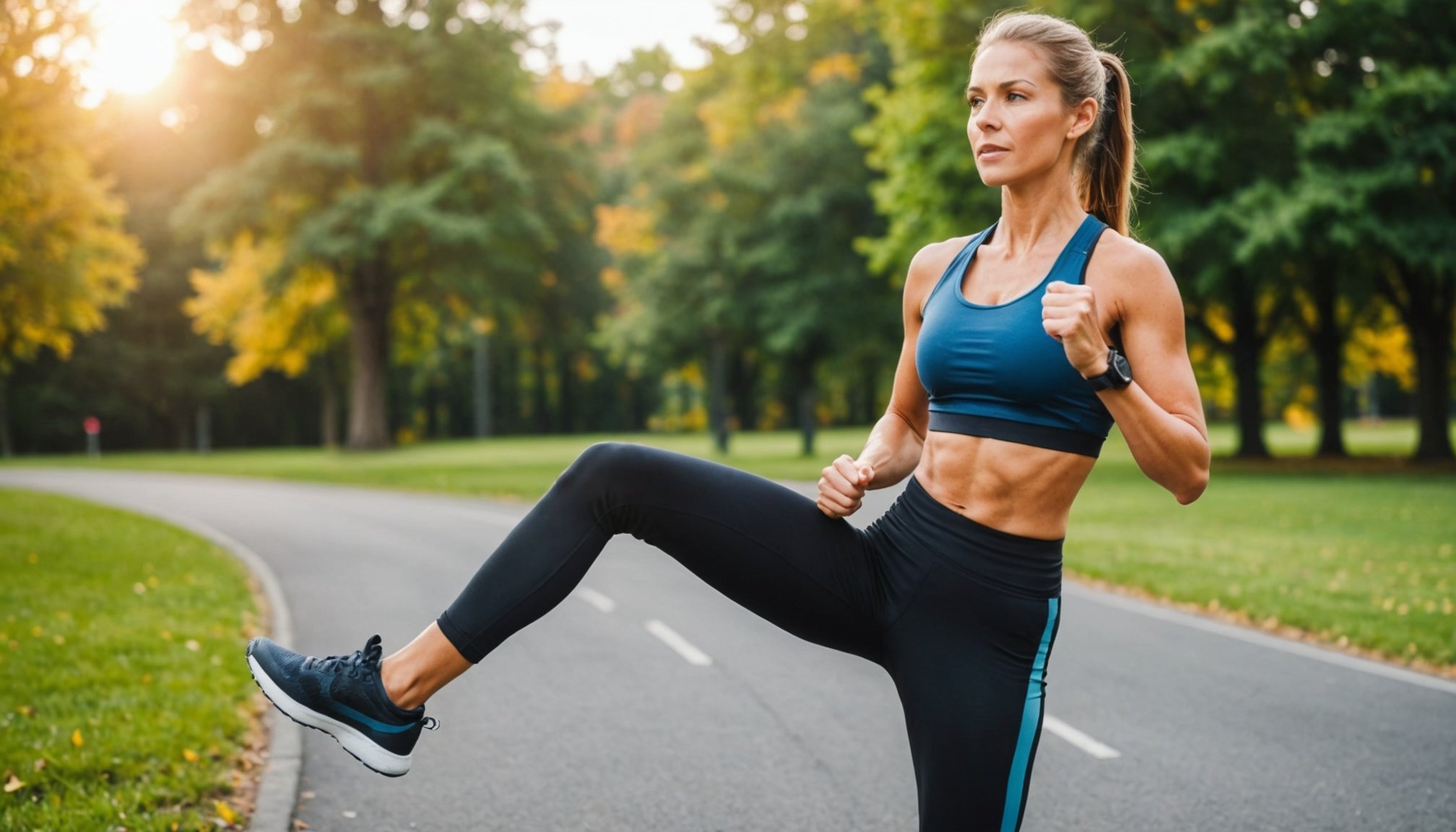Understanding Joint Sensitivity
Joint sensitivity occurs when joints become tender or painful, often due to inflammation, injury, overuse, or underlying conditions such as arthritis. Recognising the causes of joint discomfort is crucial for managing it effectively. Those experiencing joint issues should be mindful of their fitness routines, prioritising exercises that do not exacerbate their symptoms.
When approaching fitness with joint sensitivity, it is essential to opt for joint-friendly exercises. These exercises minimise stress on the joints, reducing the risk of injury and promoting overall fitness safety. Joint-friendly exercises typically include low-impact activities that maintain or improve flexibility and strength without causing undue pressure on sensitive areas.
This might interest you : Ultimate guide to sustainable fashion: key factors for selecting eco-friendly recycled clothing
Types of Joint-Friendly Exercises
For individuals with joint sensitivity, consider incorporating the following exercise types into your routine:
- Swimming: Provides a full-body workout supported by water, reducing impact on the joints.
- Cycling: Offers cardiovascular benefits while remaining gentle on the knees and hips.
- Pilates and Yoga: Focus on improving flexibility, core strength, and balance, aiding in joint health through controlled movements.
Selecting the right exercises ensures fitness safety, allowing you to maintain an active lifestyle without compromising your joint health. Implementing these joint-friendly approaches can significantly enhance your quality of life.
Also to see : Vanilla: how a natural flavor captured hearts worldwide
Benefits of Gentle Cardio Workouts
Engaging in gentle cardio has numerous advantages, especially for those prioritising women’s fitness. This form of exercise significantly enhances cardiovascular health by improving heart efficiency and increasing circulation. These low-impact workouts are ideal for maintaining overall fitness without overwhelming the body, making them a preferred choice for those recovering from injuries or beginning a fitness journey.
Gentle cardio’s health benefits are not limited to physical improvements. It also fosters emotional well-being by promoting the release of endorphins, known as the “feel-good” hormones. Consequently, individuals may experience reduced stress and improved mood. This boost to emotional health can encourage consistent exercise routines, further enhancing one’s fitness level over time.
For women, gentle cardio offers a sustainable solution to maintain body weight and muscular strength. Activities like walking or swimming are less taxing on joints, providing effective workouts without excessive strain. By incorporating gentle cardio into a fitness regime, women can enjoy both immediate wellness and long-term health benefits. It also offers psychological advantages, as regular engagement in gentle activities promotes a sense of accomplishment and boosts self-esteem. The holistic benefits make gentle cardio an essential component of a balanced fitness plan.
Top Low-Impact Cardio Exercises
Engaging in low-impact workouts can enhance cardiovascular health while minimizing strain on joints. For individuals of various fitness levels or those looking for gentle cardio exercises, numerous options exist to suit different needs.
Walking
Walking is among the most accessible and effective routines for low-impact workouts. It requires no special equipment and can be done virtually anywhere. For beginners, a brisk 20-minute walk, three times a week, can yield significant health benefits. More experienced walkers might aim for 45 minutes daily, incorporating varied terrains to increase intensity.
Swimming
Swimming provides a full-body workout that strengthens muscles and improves cardiovascular health without impacting the joints. Those new to swimming can aim for 15 to 20 minutes, gradually increasing duration as stamina improves. For a more intensive routine, incorporating intervals or using floats with resistance training can add variety and challenge.
Cycling
Cycling on a stationary bike or outdoors offers a low-impact and enjoyable cardio option. Beginners should start with 20 to 30-minute sessions, focusing on maintaining a steady pace. Increased resistance or interval training can elevate the effectiveness of the workout. Consistency is key; three to five sessions per week can enhance cardiovascular endurance and promote overall health.
Safety Tips for Gentle Cardio Workouts
Engaging in gentle cardio exercises requires attention to exercise safety to ensure a beneficial and injury-free experience. Before beginning any routine, invest time in essential warm-up and cool-down routines. These routines assist in preparing your muscles for activity and aid in recovery afterwards. Incorporate dynamic stretches before a workout and static stretches post-exercise to maintain flexibility and reduce the risk of strains.
Listening to your body is important for injury prevention. Feeling fatigue or discomfort signals the need to modify your intensity or take a break. Overextending can lead to unnecessary strain, particularly for those with joint sensitivity. Recognise the boundaries of your body to make the workout valuable and sustainable.
There are several common mistakes to avoid when engaging in such exercise, especially with joint concerns. Avoid sudden increases in intensity or duration, which can stress your body rather than strengthening it. Employing proper form and technique helps avoid undue pressure on your joints, thus promoting effective workout precautions. It is safe to ask an instructor or use visual guides to master each movement. Prioritising safety maximises the benefits of gentle cardio, fostering a healthy exercise environment.
Modifications for Joint-Friendly Options
Creating a workout plan that respects your joints is vital for maintaining long-term health and well-being. Exercise modifications are essential when tailoring routines to be joint-friendly. Start by adapting traditional exercises to minimise joint strain. This can involve reducing the intensity or altering movements to lessen impact. For example, replacing jumping exercises with low-impact steps can significantly reduce stress on the knees.
Incorporating the use of supportive equipment can also make a substantial difference. Mats can provide cushioning during floor activities, protecting sensitive areas such as the back and hips. Resistance bands offer an excellent alternative to weights, as they allow for controlled, smooth movements that put less pressure on joints.
To ensure maximum comfort and safety, adaptive workouts should be personalised based on individual joint sensitivity. Consulting with a fitness professional who can analyse your unique needs and offer personalized routines is recommended. They can help identify which movements should be adjusted or avoided, creating a sustainable exercise plan that keeps you active while safeguarding joint health. Always listen to your body and make modifications as necessary to accommodate changes in your joint condition.
Real-Life Success Stories and Testimonials
In the journey toward wellness, real-life success stories serve as powerful motivators. Personal testimonials from women who have embraced gentle cardio are not only inspiring but provide great insight into achievable results. For instance, several women have shared before-and-after stories detailing their impressive transformations through regular gentle cardio routines. These personal journeys reveal a noticeable improvement in physical stamina, mental well-being, and overall health.
One notable testimonial comes from a participant who highlights that her energy levels doubled within weeks of committing to a consistent gentle cardio regimen. Another success story includes a woman who significantly reduced her fatigue and built resilience, attributing her progress to taking part in community support initiatives and discussion groups.
Community support and discussion groups play a crucial role in maintaining motivation and encouragement. By sharing experiences and progress collectively, individuals find a supportive environment where they can stay accountable and celebrate even the smallest wins. The camaraderie found in these groups often fosters long-term dedication to a healthier lifestyle.
Such testimonials underscore the profound impact of adopting gentle cardio and emphasize the importance of actively seeking supportive communities and discussion groups to help sustain motivation.
Video Demonstrations of Gentle Cardio Workouts
Visual aids such as workout videos are invaluable for those seeking to engage in gentle cardio exercises. By watching exercise demonstrations, individuals can grasp the nuances of movement, ensuring proper form and minimizing injury risk. Visual guides break down each workout step-by-step, making it easier for beginners to follow along.
The importance of visual learning cannot be overstated, especially when mastering new exercises. Observing professionals can instil confidence, helping viewers understand the subtleties of each movement. This approach is particularly beneficial in low-impact settings where slight variations can make a significant difference in effectiveness.
Following along with guided exercise videos offers several advantages:
- Accessibility: These videos are often readily available online, allowing individuals to practise anytime.
- Consistency: Regular engagement with structured routines can foster discipline and commitment.
- Motivation: Watching others successfully perform exercises can inspire and encourage viewers to persevere.
Incorporating exercise demonstrations into a routine provides practical insights into low-impact workouts. These visual guides serve not only as educational tools but also as motivational resources, making the journey to improved fitness both enjoyable and effective. Engaging with workout videos can elevate one’s understanding and performance, leading to better overall health.
Conclusion on Staying Fit Without Pain
Embarking on a fitness journey with an awareness of joint sensitivity doesn’t mean you have to miss out on the benefits of a healthy lifestyle. It’s crucial to focus on solutions that allow you to maintain health without exacerbating chronic pain. Prioritizing health and wellness can unlock a new level of vitality.
Staying active offers countless benefits even when considering joint issues. It enhances mobility, boosts mood, and improves overall health, making it worth the effort. By adapting activities to suit your comfort level, you can enjoy fitness activities that are sustainable and beneficial.
When dealing with chronic pain, it’s essential to recognise which activities work best for you. Low-impact exercises such as swimming, cycling, and yoga can be particularly beneficial. These options help maintain cardiovascular health and flexibility without placing excessive strain on the joints.
Finally, sharing your unique experiences and fitness journeys can be liberating. It provides support not just for yourself, but for others walking a similar path. Encourage others by sharing your story, inspiring them to find a balanced approach that prioritizes health and wellness. Through this shared narrative, the fitness community can grow stronger and more empathetic, fostering an environment of support and encouragement.











